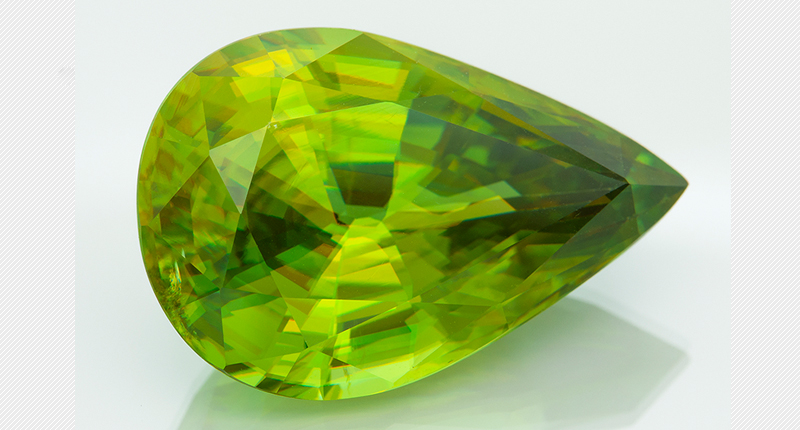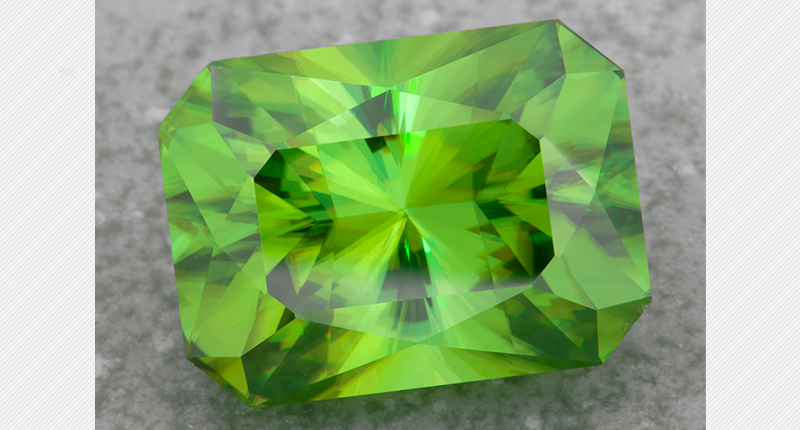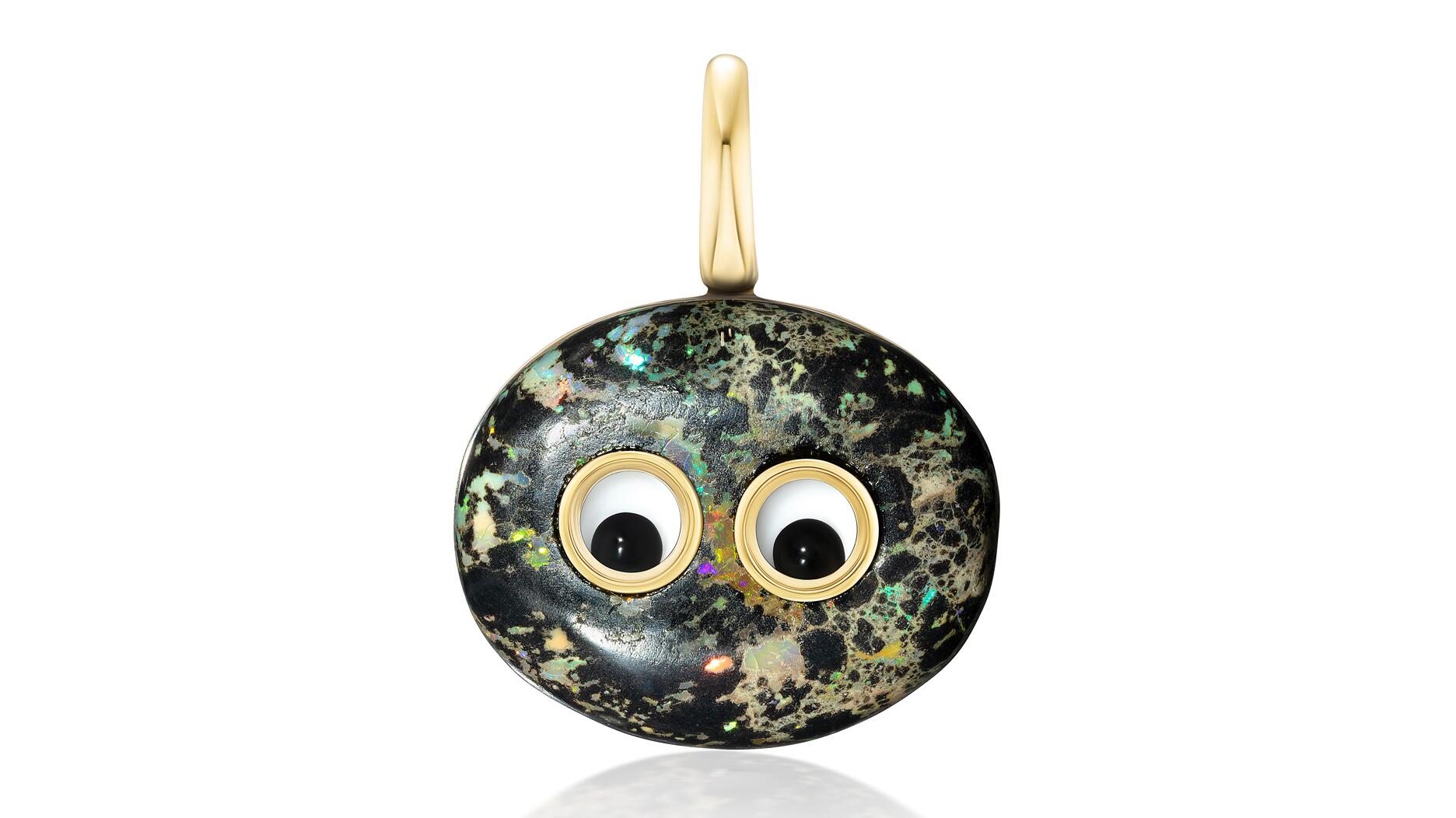The couple pleaded guilty to concealing at least $127 million in cash transactions at its precious metals businesses.
5 Things To Know About … Sphene
Discover what gives the gem a fire that can out-sparkle a diamond, its second name, geographic origins, and more.

I, for one, love when the gemstone is a vibrant, almost lime green that also shows flashes of orange and yellow.
Sphene belongs to the titanite mineral group, occurring as an accessory mineral in granitic and calcium-rich metamorphic rocks, and is the only member of the group commonly used in jewelry.
Here are five things to know about this unique gemstone.
1. It has another name.
Sphene comes from the Greek word “sphenos,” meaning wedge, a reference to the mineral’s characteristic wedge-shaped crystals.
But it also goes by the name titanite, referencing its place in the mineral group.
According to many online sources, “sphene” is more commonly used in the gem and jewelry sector while geologists and mineralogists tend to use “titanite.”
2. Gem-quality examples are rare.
Sphene is a collector’s gem and is particularly rare when you start talking about a clean stone above 5 carats, the International Gem Society says.
As is the case with all gemstones, size creates a premium with this species.
3. It has more “fire” than a diamond.
Sphene has one of the highest dispersions of any mineral; the term dispersion refers to a mineral’s ability to break white light into spectral colors.
The dispersion of sphene is 0.051. A diamond’s dispersion, by comparison, is 0.044.
It’s this high number that helps to give the stone such an intense “fire,” showcasing multiple colors, especially when it’s well-cut.
Sphene has a refractive index of 1.843-2.110 and a birefringence of 0.100-0.192. Its high birefringence often results in visible doubling of facets within the stone, meaning there looks to be a “fuzziness” inside the gem.
It’s a 5 to 5.5 on the Mohs scale, making it softer than other, more well-known gems like sapphire, ruby and even garnet.
Sphene has distinct cleavage in one direction, but can still create beautiful jewelry when cut and set properly.
It’s also pleochroic, showing more than one color depending on the angle from which you view it; sphene’s transparent specimens are notable for their trichroism, showing three different colors.
The three colors depend on the base stone color, according to Gemdat.org.

4. It comes in a variety of hues, but some are preferred.
According to IGS, there’s a preference in the market for lighter tones, especially the yellows, light oranges and greens, which best show off the gemstone’s amazing dispersion.
IGS also notes that “chrome sphene”—dark green in color—is the most valuable type as its hue mimics a good emerald.
5. Here are its sources.
The primary sources of sphene are Canada, Madagascar and Mexico, IGS says.
Baja California, Mexico produces yellow-brown, brown, green and dark green (chrome) crystals up to 4 inches long, making it one of the world’s main sphene deposits.
Madagascar produces green crystals, some of which are large in size, while Canada produces brown and black crystals.
IGS added that Austria and Switzerland also have both produced sphene.
Other places where sphene has been found are: India, Sri Lanka, Afghanistan, Germany, Kenya, Myanmar, Pakistan, Russia, New York state and Minas Gerais, Brazil.
The Latest

Consumers shared concerns about prices, inflation, tariffs, trade, and politics in the survey’s write-in response section.

In February 2026, the auction house will move its headquarters to the former Steinway Hall, a neoclassical landmark on Billionaires’ Row.

How Jewelers of America’s 20 Under 40 are leading to ensure a brighter future for the jewelry industry.

The new show will take place Jan. 23-25, 2026.


The former BHP Billiton leader and Gemfields chairman is remembered for his influential leadership throughout his 50-year mining career.

The LVMH-owned brand has partnered with the costume design union to revamp its award for 2026.

Roseco’s 704-page catalog showcases new lab-grown diamonds, findings, tools & more—available in print or interactive digital editions.

The luxury titan inked a deal to acquire an initial minority stake in the jewelry manufacturer with a pathway to full ownership by 2032.

The company’s curation of unsigned vintage and estate jewelry debuted at the Bloomingdale’s in Costa Mesa, California.

In the recent multi-shipment seizure, CBP also found counterfeit Audemars Piguet, Moncler, and Chrome Hearts items.

Jewelers of America execs and National Jeweler editors discuss tariffs, the sky-high gold price, and the engagement that broke the internet.

The luxury goods company said founder Ippolita Rostagno will remain at the brand’s helm.

Laura Burdese, who joined the Italian luxury brand in 2022, will take on the role in July.

Need a gift for the cat lover who has everything? Look no further than our latest Piece of the Week.

It purchased the “Grosse Pièce,” an ultra-complicated Audemars Piguet pocket watch from the ‘20s, for a record-breaking price at Sotheby’s.

The lab-grown diamond grower now offers custom engagement and fashion jewelry through its Kira Custom Lab Jewelry service.

Chandler got his start at Michelson Jewelers and has served as DCA president and CEO since 2001. He will retire at the end of the month.

The boutique is slated to open this week inside Terminal 8, offering pre-owned Rolex watches and more to international travelers.

Sponsored by Digital Monitoring Products

The special-edition egg pendant ingested in a New Zealand jewelry store was recovered after a six-day wait.

Associate Editor Natalie Francisco plays favorites with Piece of the Week, selecting a standout piece of jewelry from each month of 2025.

The “Love and Desire” campaign is inspired by the magic that follows when one’s heart leads the way, said the brand.

Two awardees will receive free tuition for an educational course at the Swiss lab, with flights and lodging included.

Berta de Pablos-Barbier will replace Alexander Lacik at the start of January, two months earlier than expected.

Sotheby’s held its first two jewelry sales at the Breuer building last week, and they totaled nearly $44 million.

Winners will receive free registration and lodging for its fourth annual event in Detroit.




























